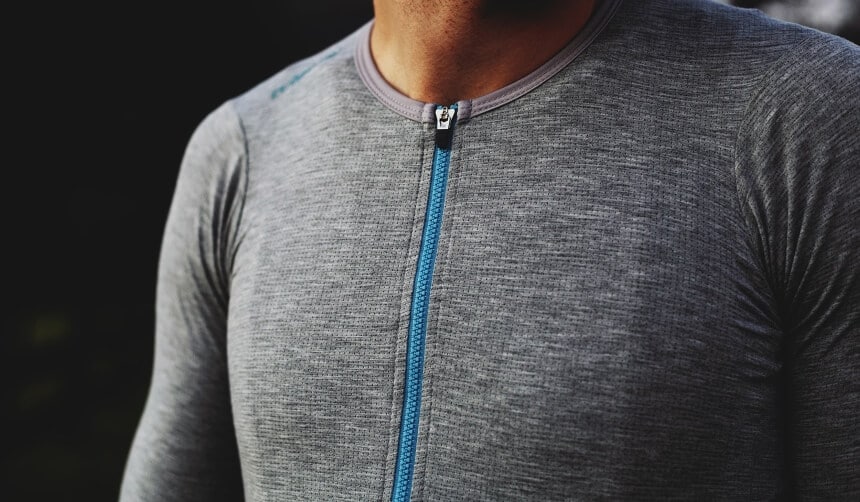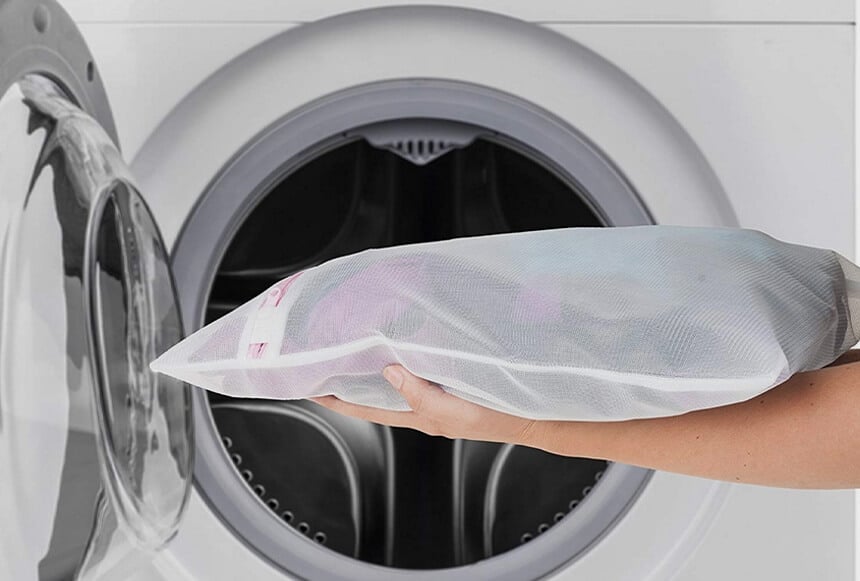

One of the necessities of life is clothing, and there are several forms and types of clothes. Clothes vary from their designs down to the materials used to make them and there are several of these materials employed in making clothes. These materials have their unique features and there are different ways each can be applied to make clothes.
Out of these numerous clothing materials, we are more interested in the micromodal fabric. The micromodal fabric is one of the major textile trends of recent and it has caught the attention of several textile industries. Many interesting features come with this material. This article will give you an insight into this micromodal fabric; you’ll get to see what the excitement is all about.
Try to imagine a material that merges both the properties of silk and cotton together; that is exactly what the micromodal fabric is like. Micromodal fabric is an improvement of the rayon fabric; it is a type of fabric created from the cellulose of beech trees.
The process of production and the raw material used in making this micromodal fabric gives it a unique softness and comfortable feeling, and it also gives it a toughness that is uncommon to most materials. Micromodal is the textile of the future, and several industries are adopting it.
This material is particularly popular in the underwear-making industry, and using Calvin Klein as a reference we discovered that their men’s body modal boxer brief is the underwear product with the highest demand. There are several other uses of micromodal, and we’ll be looking at some of them later in this article. We’ll also go into some of the properties and benefits of this material that makes it one of the top choices of clothing material.
 Micromodal comes from the cellulose gotten from beech trees. This beech tree is a deciduous tree from the family Fagaceae. Beech trees can be found naturally in temperate Europe, Asia, and North America. There are several species of beech and they number up to 13 different species.
Micromodal comes from the cellulose gotten from beech trees. This beech tree is a deciduous tree from the family Fagaceae. Beech trees can be found naturally in temperate Europe, Asia, and North America. There are several species of beech and they number up to 13 different species.
The beech trees are of great importance to man, and they are a vital source of renewable energy. Beechwood serves as a good source of fuel in the form of firewood; it can burn for a long time with bright flames. Beech is also employed in the production of some beer and the production of drums.
Also, the cellulose produced by this tree is what is used in the production of micromodal fabric. The cellulose is processed into a type of rayon that is then used to make the micromodal fabric.
Making micromodal fabric involves a series of steps that start from extracting the significant raw material needed for its production (cellulose) up to the end product.
To make this material of interest, you first need to locate well-developed beech trees suitable for cutting and likely to contain a high amount of cellulose content. These trees are then lumbered and cut down into smaller blocks used by the production industry.
Once the micromodal factory gets the blocks of wood, they extract the cellulose present by making use of a chemical solution that can separate the cellulose composition of the tree from the rest of the wood.
 After extracting the cellulose content, the cellulose is processed into flat sheets soaked in caustic soda, having a particular concentration for some time.
After extracting the cellulose content, the cellulose is processed into flat sheets soaked in caustic soda, having a particular concentration for some time.
After soaking the cellulose in caustic soda for a while, it is removed and broken down from flat sheets into crumbs.
Once the cellulose has been reduced to crumbs, the crumbs are soaked inside carbon disulfide. The cellulose is transformed into sodium cellulose xanthate; once it undergoes this process, it becomes a synthetic material.
After transforming the cellulose into sodium cellulose xanthate, it is soaked in caustic soda again to obtain a viscose solution. This viscose solution is then passed through a spinneret to create several holes on the micromodal.
Once this process is complete, the micromodal produced is treated with HydrogenTetraoxosulphate acid. It is then stretched and structured into yarn, which is further made into spools.
There are a lot of benefits that come with micromodal fabric; that is why it is among the best choice of clothing material. Let’s look at some of these advantages:
One of the major features common to micromodal fabric is absorbency. The method and technique employed in the production of micromodal fabric give it a very high degree of absorbency. Absorbency refers to the rate at which a material can take up moisture (including but not strictly water). One common material that most people know for its high rate of absorption is cotton. However, materials made from micromodal fabric have shown greater degrees of absorbency. Micromodal fabric shows an increase in the absorption rate of up to 50% compared to cotton. This material is the type of material you want to have on a very sunny day, especially if you’re prone to excessive sweating.
This feature is also another reason why this material is highly adopted by textile factories that make underwear and undergarments. An excellent example of micromodal underwear is the DAVID ARCHY Micro Modal V-neck; it has a high degree of absorbency and breathability (another feature that will soon be discussed)
 Another reason this material is highly recommended is the zero shrinking and well-fitting properties it possesses. Unlike most materials that tend to lose shape after a while or shrink when you wash, micromodal fabrics don’t pose any such problems. This material is designed to maintain the shape of your body throughout; it doesn’t get misshaped or overstretched.
Another reason this material is highly recommended is the zero shrinking and well-fitting properties it possesses. Unlike most materials that tend to lose shape after a while or shrink when you wash, micromodal fabrics don’t pose any such problems. This material is designed to maintain the shape of your body throughout; it doesn’t get misshaped or overstretched.
You can wash your micromodal fabric without worrying about the shrinking effect common to most other forms of fabric.
The manufacturing process of this material is aimed at making it as comfortable as possible. Micromodal fabric is designed to be very soft; it is very similar to silk, if not softer. This material doesn’t have any harsh effect on the skin; on the contrary, it is very texture friendly. If you have very sensitive skin or most clothing materials leave bruises on your skin, you should try out the micromodal fabric.
This is a significant selling point for micromodal fabrics. Despite their advanced softness, they are still among the most rigid types of fabric out there. You can use your micromodal material for a long time, and it will still maintain its integrity, from the shape to the color and even its softness.
This feature also makes this material cost-effective, and it reduces the amount you need to spend on replacing your worn-out clothes or underwear.
While micromodal fabric has many benefits, it will be inaccurate to say that it doesn’t come with some drawbacks. Although the advantages outweigh the disadvantages, we still have to look into some of these drawbacks:
It was mentioned earlier that micromodal fabrics are suitable for hot weather and have a high absorbency rate. However, the opposite is true for cold weather. Micromodal materials have a relatively low amount of insulation, and while they are perfect for removing heat and moisture from the skin, they are not so helpful in trapping heat.
This inability to trap heat or lack of insulation makes the micromodal material a bad choice for cold times. This drawback greatly limits the application of this material to a particular time, and it reduces its versatility.
The series of processes involved in making micromodal fabrics greatly changes the natural constituents of the cellulose and turns it into a more synthetic form. This change into a synthetic type of material causes the bio-degradability of the material to reduce significantly, adversely affecting the ecosystem.
Improper disposal of this type of material can lead to soil and water pollution, which is harmful to the ecosystem.
We already discussed some of these properties under the advantages, but let’s look at some of the other properties that micromodal fabrics have to offer.
This feature refers to the ability of micromodal materials to increase in size or stretch to fit the wearer’s body. It has an elastic feature.
This is one of the main defining features of micromodal fabrics. It allows for a lot of breathing space. This property makes it easy for the material to get rid of hot air and moisture, and it is the main feature that causes the cooling effect of micromodal fabrics.
 Micromodal fabric can expel moisture. It absorbs the water from the skin and brings it up to the surface, where it is evaporated.
Micromodal fabric can expel moisture. It absorbs the water from the skin and brings it up to the surface, where it is evaporated.
This feature is not well pronounced in micromodal fabrics when compared to a material like cotton. However, micromodal fabrics can still retain a certain amount of heat.
Micromodal is a tough type of material, and it can last for a long time. It doesn’t wear out quickly and can be used repeatedly without worries. You can also wash it several times without it wearing out or losing its color and shape.
Cotton is one material that is commonly compared with micromodal fabric, and while cotton has some advantages over micromodal, it can still not be compared to it.
In terms of durability, breathability, stretchability, and absorbency, micromodal fabric is the better choice—the design and process of making micromodal fabric give it these advantages over cotton.
In terms of heat retention, cotton can retain more heat when compared to micromodal fabric.

Research shows that while micromodal fabric is eco-friendly and minimizes the destruction of beech trees, once the materials have been produced into the synthetic, it becomes a biohazard because they become non-biodegradable.
Micromodal fabric improves the textile industry; it is popularly used by sportswear and underwear-making industries because of its unique properties.
Sewing this material can be quite different from other types of material, and you can learn how to do it easily from here.
Also, making the perfect clothes with your micromodal material depends on the type of machine you employ. Some of the best machines recommended for use can be either foot-walking machines or other types.